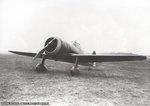kool kitty89
Senior Master Sergeant
The Performance for the Hawk with the 1830-17 engine would be with 100 octane fuel. (due to the low critical altitude, and high low-level speed)
And the He 112 was suposeddly somewhat superior in performance to the Bf 109 with the same engine. (~20-30 km/h faster, 510 km/h for the B-2 with Jumo 210G) And also had significantly better range.
The main disadvantage to the Bf 109 being much greater parts count and elliptical wing making it more difficult to construct. (and possibly more difficult to repair)
The Hawk would still have significantly better range though.
Interesting "Super Hawk" concept, somthing I've thought about before, but in combination with a tight fitting cowling with latge spinner and cooling fan. (of the final version used on the XP-42)
And the He 112 was suposeddly somewhat superior in performance to the Bf 109 with the same engine. (~20-30 km/h faster, 510 km/h for the B-2 with Jumo 210G) And also had significantly better range.
The main disadvantage to the Bf 109 being much greater parts count and elliptical wing making it more difficult to construct. (and possibly more difficult to repair)
The Hawk would still have significantly better range though.
Interesting "Super Hawk" concept, somthing I've thought about before, but in combination with a tight fitting cowling with latge spinner and cooling fan. (of the final version used on the XP-42)


